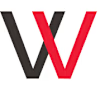3 Features to Look For In An Inventory Management System
The inventory management system has evolved from simply recording and reporting inventory data to make plans and projects to fulfill customer orders and increase profitability. How do you know which solution is best for your business given all the options available today? Which features are most important?
• Scanning & Barcoding
Data can be represented visually and machine-readable with a barcode. A scanner is essentially used to enter data electronically. A barcode usually contains some kind of data, such as a lot number, shipment number, or purchase order number. As the data is scanned, the user can access and view it, as well as take action on it.
• Improvements in inventory analysis that are actionable
The data elements in inventory management systems are hundreds of thousands. Which inventory management analyses are available out of the box, and do they matches your inventory management method?
The dashboards, if they exist, how actionable are they? Does the system identify the products that the purchasing agent or inventory manager may act on according to the system? In what ways are the potential systems supported by the ad-hoc research functions of merchants or the purchasing functions of consumers? As part of these features, merchant-driven characteristics can be placed on product records as notes and in data analysis, as well as primary and secondary vendors.
• Configurability
Two different entities/companies can be configured on a single system in such a way that each has a unique "look and feel" or personality. This approach allows for executing more comprehensive systems across industries and merchandise without requiring any personalization. This is essential for a company to strengthen its core just like customer lifecycle value service.
There is some configurability in all systems, but what are you able to accomplish with it? Here are a few examples:
1. Roles (groups of users) or user configuration tables that enable the setting up and viewing of data security functions within the context of your organization.
2. A system that can be controlled by a variety of types of hardware and interfaces.
3. A detailed accounting structure for expenses should be adopted
Users may require additional features
Tracking goods in transit using RFID: Useful when you receive supplies from a third party and dispatch those goods for delivery. Through this feature, you can track your in-transit inventory in real-time using RFID technology.
Forecasting the demand: With this feature, you can use past data to identify the demand for the future. You should ask vendors on your shortlist about forecasting capabilities if it's important to you. Not all platforms offer it, so be sure to inquire.
Like this project
Posted Jan 7, 2022
Likes
0
Views
2

